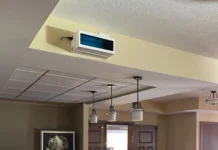While work on the first issue of 2024 is well underway, we paused to see which UV Solutions articles from 2023 caught the eyes of our readers. The following stories were the top reads from 2023 for visitors to the website.
1. Las Vegas Valley Treats Drinking Water with UVC LED Technology
Las Vegas Valley Treats Drinking Water with UVC LED Technology
The Las Vegas Valley Water District (LVVWD) is the water service provider for the city of Las Vegas and unincorporated Clark County. The Southern Nevada Water Authority (SNWA), located in Las Vegas, is a regional entity comprised of seven water and wastewater agencies, including the Las Vegas Valley Water District. SNWA recently conducted a project to evaluate the PearlAqua Tera™ for municipal water treatment.
2. New Optical Metrology and Documentary Standards for GUV Radiation Sources
New Optical Metrology and Documentary Standards for GUV Radiation SourcesIn May 2020, the Illuminating Engineering Society (IES) and International Ultraviolet Association (IUVA) signed a memorandum of understanding to assemble a group of experts in the measurement of ultraviolet C-band (UVC) emissions to develop American National Standards (ANSI Standards) for the measurement and characterization of UVC device performance. These ANSI standards will enable a consistent measurement method for determining the number of photons generated by a device and its flux in each direction.
3. The Safe Act of UVC in Food Production
The Safe Act of UVC in Food Production
Ultraviolet light is known for its antimicrobial effects. The band C part of the spectrum has strong DNA absorption peaks. The modification of the DNA by low-pressure mercury lamps emitting 254 nm has unlocked decontamination and disinfection applications. Equipment manufactured for use in a food-production environment needs to consider what will be happening in these types of environments.
4. The Cryptosporidium Story: 25th Anniversary of the Discovery that Cryptosporidium Undergoes Ultraviolet Inactivation at Low Doses
The Cryptosporidium Story: 25th Anniversary of the Discovery that Cryptosporidium Undergoes Ultraviolet Inactivation at Low UV Doses
Early UV disinfection research suffered from a lack of multi-disciplinary teams that could effectively deliver and quantify the UV dose through their understanding of UV photonics.
5. Reflection of UVC Wavelengths from Common Materials During Surface UV Disinfection: Assessment of Human UV Exposure and Ozone Generation
Reflection of UVC Wavelengths from Common Materials During Surface UV Disinfection: Assessment of Human UV Exposure and Ozone Generation
The COVID-19 pandemic has promoted interest in using UVC devices for surface disinfection to reduce pathogen transmission, especially in occupied public spaces. While UVC devices have been shown to be highly effective against various pathogens, safety of UVC devices needs to be evaluated before applying them around human occupants.






